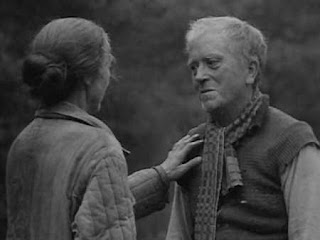Věra Chytilová & Jan Schmidt
THIRD TYPE
1)The third of the Czech genres are films about contemporary life.
2)Under the Soviets, Czech cinema sang the praises of the noble worker and a collective society.
3)However, several of the Czech New Wave films suggested that work did not equal happiness and
implied that the essential human problems were personal rather than societal.
Film Daisies (1966)
1) Věra Chytilová’s Daisies (1966) is a film that caused controversy upon its release.
2) Although Chytilová didn’t set out to explicitly make a feminist film,
Daisies is the story of two young women (named Marie I & II) who decide to “go bad.”
3)“Going bad” suggests that they set out to subvert the contemporary patriarchal order, which was seen
as a critique of the Communist regime in the late 1960s.
4) The two girls spend their time exploiting weak-willed older men and consuming food and drink.
5) In one of the film’s most famous sequences, they cut up a succession of phallic objects (bananas,
sausages, bread rolls) with scissors.
6)The film was banned and Chytilová was blacklisted.
Michael Koresky explains the film:
"On the surface, Daisies’ assemblage of outlandish scenarios enacted by two ferociously antiestablishment figures would seem to mark it as simple anarchic slapstick, like a New Wave Marx Brothers comedy. But Chytilová has called her film “a philosophical documentary in the form of a farce.” The Maries are not merely railing against a society that views them as little more than objects (in the opening scene, Marie II calls herself a panna, which translates as both “doll” and “virgin” in Czech, and the girls play with, and at one point remove, their limbs as though they were the plastic appendages of mannequins); they are also existentially angry. Early on, they decide the world is meaningless, “spoiled,” which they use as justification to spoil themselves. By refusing to cultivate a psychological connection between audience and character, and by confounding any sense of narrative momentum, Chytilová and her screenwriting partner Ester Krumbachová create protagonists who seem to have no future or past. Blank slates, they have been interpreted over the years variously as embodiments of healthy rebellion and the banality of evil. Either way, they are good representations of Chytilová’s belief that “people are primitives and aesthetes at the same time.”
Though Daisies remains playful to its climactic orgy (a mega food fight), it is ultimately a dark, subversive work, aggressively critiquing those who might find it offensive before they even have a chance to complain: its closing dedication is to people who “get upset only over a stomped-upon bed of lettuce,” over the sounds of firing artillery."
Daisies (Věra Chytilová, 1966):
Two girls in heels - that's the soundtrack...cuts of locks ot doors. in some abandoned place. I'm hungry maybe we'll find something - hide in an elevator and go up in it.. black and white - see a butcher shop in color and pass by a symphony. Their cute little faces are looking out the hole of the elevator. Where is the food? They have goth like black eyeliner around their eyes. Come upon a banquet hall. Splendid with a chandelier. Run around playfully counting the chairs. Lots and lots of food. They start eating the food. They play with the food and the soundtrack is heavy chomping and them playing with the beautiful works of food. kind of symphonic music in the background. They grab plates and start prancing around. Turn on the lights. Drops a glass and then there is a flutter of pictures in color of the food quick as she goes ah, ah, ah...
Article about the film Click Here
Good Article about the film Click Here
A YouTube analysis of film Click Here
THE FOURTH TYPE
1) Finally, the fourth genre of Czech films were surreal or futuristic allegories such as Jan Schmidt’s
The End of August at the Hotel Ozone (1966).
2) After nuclear attacks by the East and West wipe out the Earth's population, a band of eight women
wander the landscape of Eastern Europe searching for food, supplies, and other survivors.
3) In time, the women discover a dilapidated hotel that has become home for an old man who guards a
few tattered remnants of the former civilization: a television that no longer works, an old newspaper,
and a wind-up phonograph.
In the following clip, the women encounter a man for the first time in their lives.
Hotel Ozone - the last man on earth. First time women have seen a man.Article about the movie Click Here
The End of August at the Hotel Ozone (Jan Schmidt, 1966):
Here's a clip of the introduction although we didn't see that Click Here


No comments:
Post a Comment